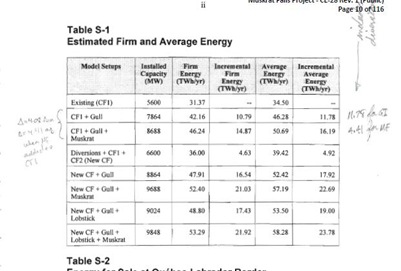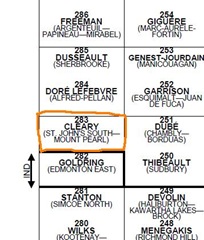It is wonderful to be proven right.
Sometimes being wrong is nicer.
In this case, wrong would be the prediction from this corner that the Great VO Muskrat Falls debate would be like tossing kittens off the overpass into oncoming traffic.
The reaction to the hour-long radio program seems to be that the thing was alright. No one scored any huge knock-out blows. No one let slip some gigantic new piece of information. And no one died.
That last bit understates the case. Recently minted Liberal leader Dwight Ball impressed some people by holding his own with his more experienced colleagues. Surviving would have been good. Keeping pace with the others was better.
Now make no mistake about it. Neither the Liberals nor the NDP have decided to oppose the Muskrat Falls project. Their comments, as related by VOCM or the Telegram, raise some questions about how government is handling the thing, not with the proposal itself.
In the scrum afterward – here’s a short clip via the Telegram – note that natural resources minister Jerome Kennedy goes after the NDP. As SRBP noted before, that’s a sign the Tories think the NDP are the main competition. It’s also an incredible NDP weakness. Lorraine Michael scrummed on environmental contamination. Odd then that she didn’t think of that before she campaigned for a loan guarantee to make the project happen. Maybe Kennedy will make a sharper slice in the future but he let Michael off easy in the “debate”.
Other than that, Kennedy fell back on a few items that are so utterly ludicrous that it is amazing none of his colleagues laughed him off the stage. Among the gems (taken from the VO account:
- “He says gas right now at $3/million BTU's is not economically feasible to be developed, Kennedy says it would have to be more in the range of $10-12/million.” In other words, offshore gas is too cheap for us to use. makes no sense.
- “Kennedy says until Labrador industry needs the power it can be sold to the United States, and then taken back as need be.” Well it could be if they had markets. Truth is Nalcor can’t find anyone to buy Muskrat Falls electricity.
Kennedy’s whole discussion of Labrador power was largely fictional, at least as far as having Muskrat falls meet any needs was concerned. It’s telling that neither of the other parties seem to have belted that one out of the park..
As for Ball and the Liberals, he asked a good question of Kennedy. Ball wanted the price per kilowatt of the electricity at Soldier’s Pond. Kennedy wouldn’t provide it. Either he can’t because they don’t know what the numbers will be or he won’t because the number will frighten the shit out of people. There’s no upside to that for the Muskrat proponents.
This is an old issue, though. And it’s long beyond the point where this was the most significant one. We know the thing will be a costly one for the public. We know there are cheaper alternatives. we know Nalcor hasn’t done its homework. We know they are basically making this up as they go along. T
The PUB documents show Nalcor and the provincial government started looking at this configuration in mid-2010 only a few months before they announced it was a done deal. They cobbled together their basic documents from a bunch of different studies that may or may not cover needed work on this particular configuration of Lower Churchill development. Manitoba Hydro pointed to some glaring management issues, any of which would cause people to slow down the project if not abandon it altogether.
Anyone who firmly opposes this project can safely make broad statements about repeated failures by government and Nalcor. The whole discussion is at the point now where the case against Muskrat Falls is made. We can cut to the only sensible conclusion: scrap the “Infeed” plan and send ‘em back to the drawing board.
The fact that the NDP and Liberals keep shying away from the blatantly obvious conclusion on Muskrat Falls gives the provincial government the room they need to slide the whole thing through.
While no kittens were harmed in the Great Debate, the 514,000 who will pay for this mess of a proposal might get crushed later on, if Jerome gets his way and Lorraine and Dwight can’t get their thumbs out.
- srbp -






